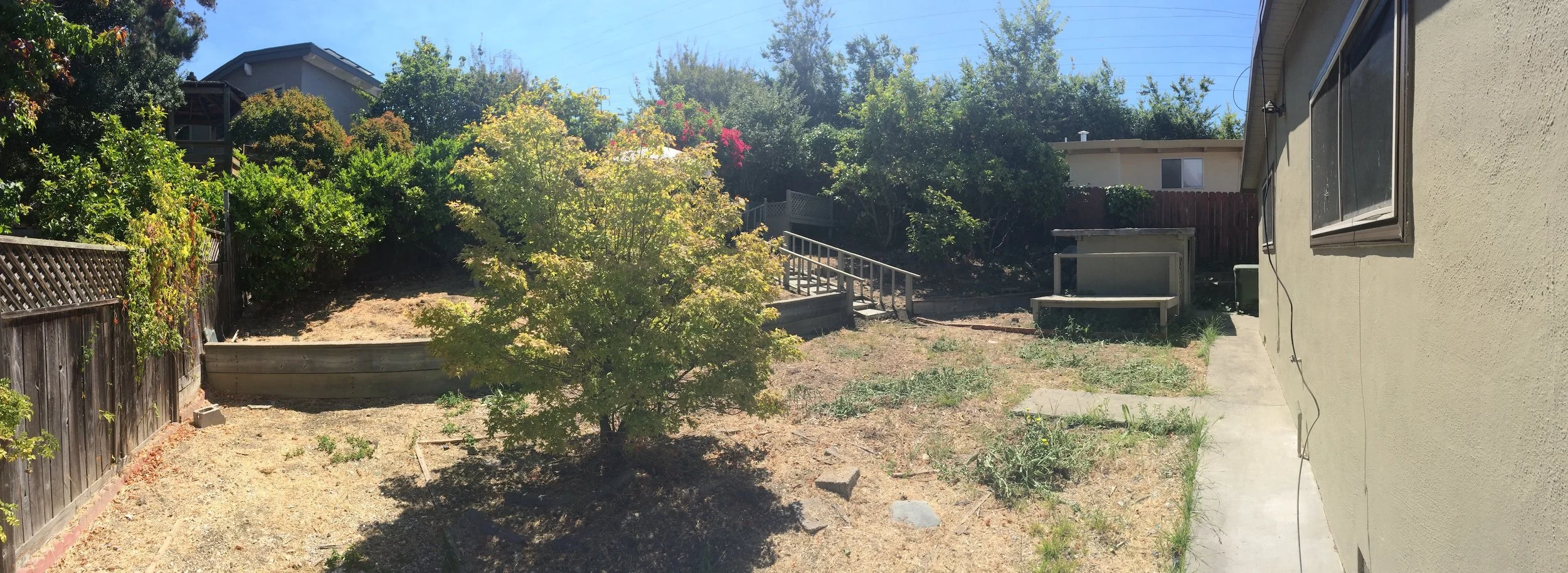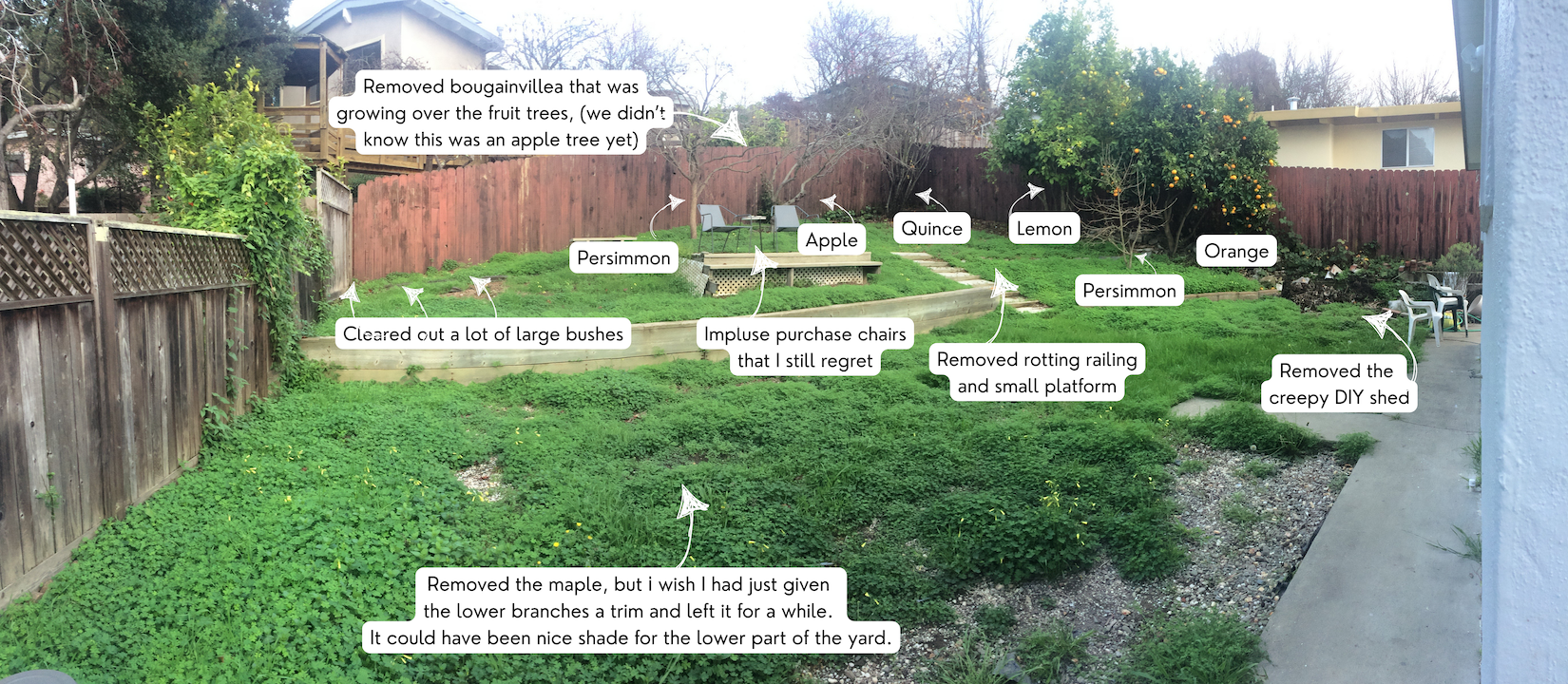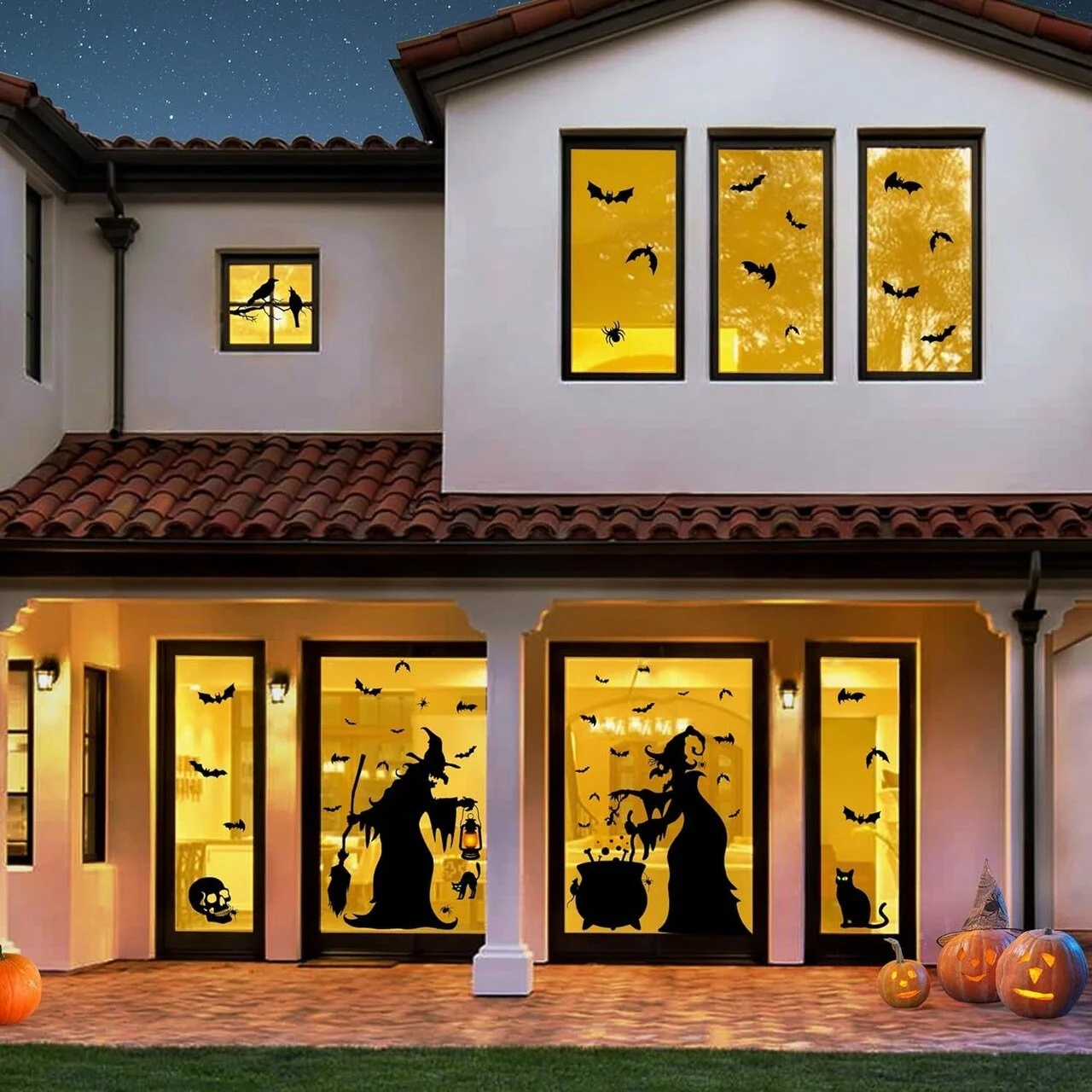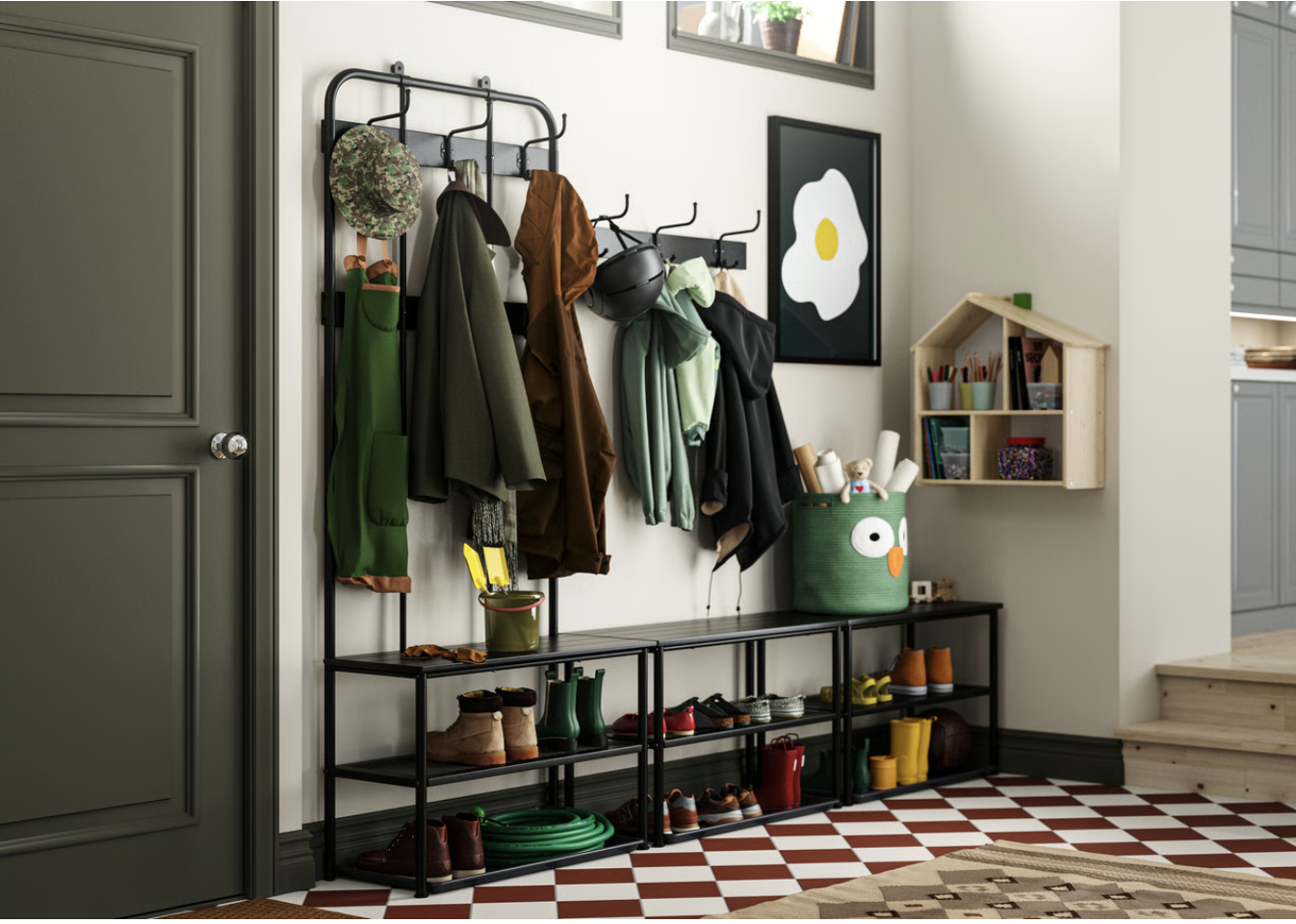Before You Buy: Plan Your Outdoor Space with Purpose
When we moved into our house, it was easy to see where to start because there was a lot of overgrown plants and weird rotten wood structures. If this is also your yard, just start clearing it out, it will be much easier to build a plan from there and it won’t be such an overwhelming eye sore every time you look at your yard.
Honestly, the yard is the one part of our house where I now feel like an expert—only because I made every possible mistake first. Some blunders came from a lack of knowledge, being impatient, others were stress purchases I made just to feel like I was doing something (“why did I buy so many rocks?!”). But hey, the upside is I’ve learned what actually works—so you don’t have to repeat my irritating mistakes.
Our backyard when we moved into our house (August 2016)
Backyard after demo (winter 2016)
It’s tempting to start filling your cart the minute sunny days return—maybe a patio set you saw on sale, or that trendy fire pit everyone seems to have. But if you're reading this, you’re probably not into mindless purchases or rushing into projects just because an algorithm told you to.
Before you buy anything for your outdoor space, let’s press pause. Whether you have a sprawling yard, a compact patio, or just a sliver of balcony, you deserve a space that works for you. Not your friends. Not your neighbor. You.
Step 1: Define How You Want to Use the Space
Grab a notebook, your favorite pen, and take a little time to think through how you really want to use your outdoor area. Here are a few prompts to get started:
Do you want to entertain guests? How many people? How often?
Are you hoping to garden, grow food, or have a spot for herbs?
Do you want a peaceful place to read, journal, or have your morning coffee?
Is this space for kids to play, pets to roam, or both?
Do you dream of outdoor dinners, even if it's just takeout with a view?
Step 2: Observe Before You Act
Spend a few days noticing how your outdoor space actually functions.
Where does the sun hit, and when?
Are there areas that stay shaded or collect water?
What’s the natural path you walk through the yard or space?
Where do you feel most relaxed standing or sitting?
Understanding the rhythm of your space helps you design something that works with the environment—not against it.
Step 3: Sketch It Out
You don’t need to be an artist. A rough sketch with circles, boxes, and arrows is enough. The idea is to map out zones based on your goals.
Here’s a simple example layout:
Small Yard or Patio Zones:
Eating area (table + chairs) near the kitchen door
Container garden along the sunniest edge
Cozy chair and side table under a tree for reading
Medium Backyard Zones:
Lounge area with a bench and shade umbrella
Open area for kids to play
Raised beds and compost tucked along the fence
String lights over the “hangout” zone
Step 4: Start Slow and Smart
Once you’ve defined your zones, you can start to prioritize what you actually need.
Can you use things you already have?
What can you DIY, like building a raised bed or painting old furniture?
Can you add just one zone this season and save the rest for later?
Resist the urge to do it all at once. Outdoor spaces evolve—and that’s a good thing.
Step 5: Don’t Let Perfect Get in the Way of Personal
The goal isn't a magazine-ready yard. The goal is a space where you feel good. Where you can enjoy an al fresco dinner. Where your kids can play while you sip your coffee. Where your time and money are spent intentionally.
A functional, beautiful outdoor space isn’t about trends—it’s about how you want to live.













